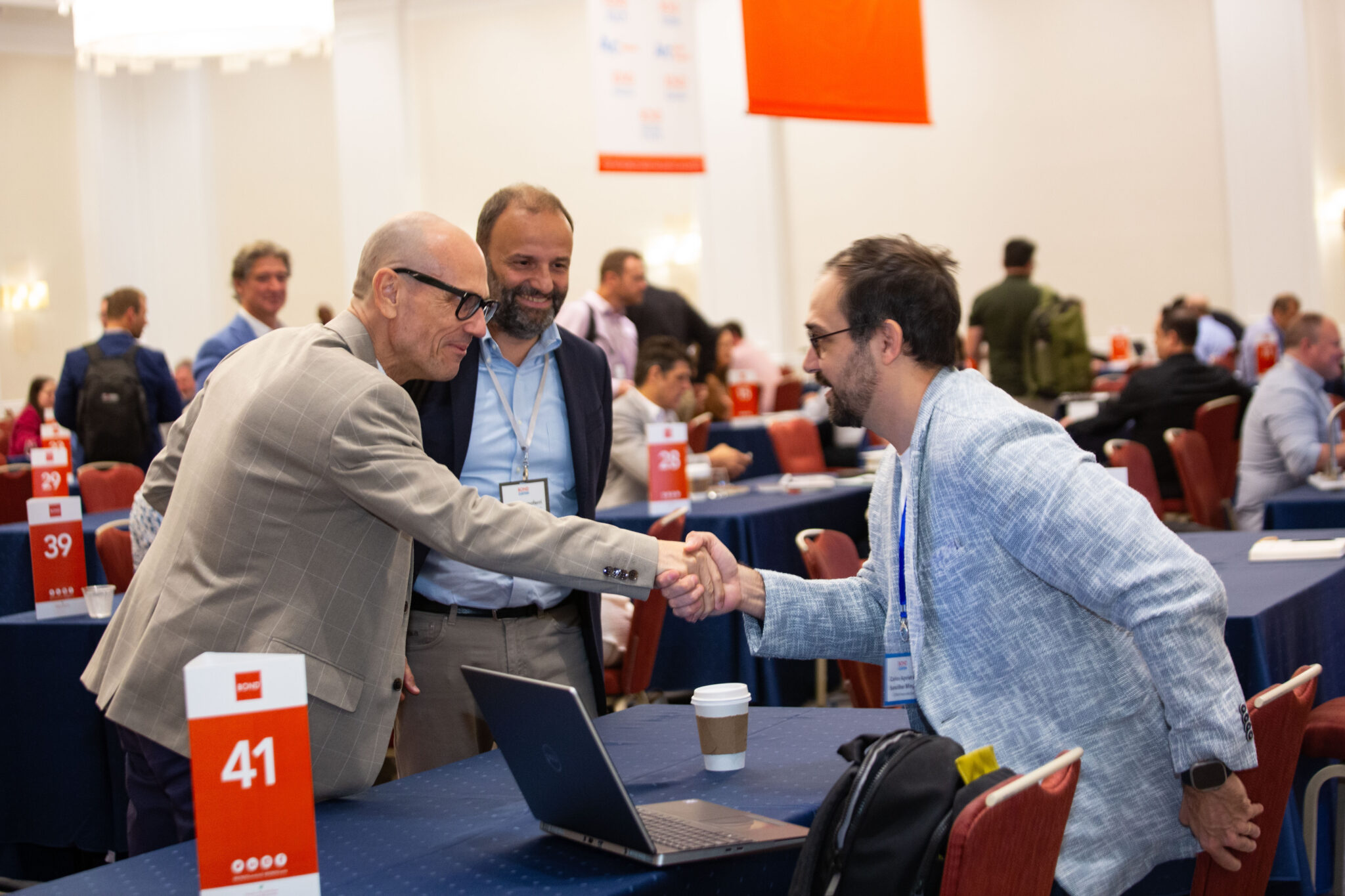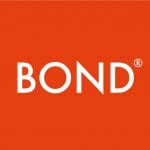A Supplier's Guide to a BOND Event
Your project community comes together for just 3 days out of 365. Not a lot, is it? With tips from our veteran suppliers and architects, this guide will help you make those 3 precious days count.

Did you know that there are three parts to a BOND event?
- Preparation
- The event
- Follow up
And if you give each of them some love, good things will happen.
1. Preparation

Do your research!
According to our Principals, being properly prepared for your meetings makes all the difference. You’ve got access to the buyer profiles (the bit where you log in and choose your meetings). Here you’ll find some extremely useful info. on who they are, what their remit is and what they’re working on. But we recommend you also do your own research. Because the more curious you are about the person you’re meeting and the projects they have on their mind, the more interesting and fruitful your conversations will be.
Treat every meeting as unique
If you've done your research ahead of time, you'll have more time to dig into specifics in your meeting. Ask questions and try to relate your products/service to what that architect or designer is working on right now. Tailor your questions and therefore your approach to each person so you can present your products in the most relevant way.
I really like when the supplier has read up on our firm and knows what type of projects we do and in which locales. If they have done this, it becomes much easier for me to see how their products can translate into our projects and gives me something tangiblethat I can communicate to my teams in the office
Stephan Dallendorfer, Principal,
FXFOWLE Architects
Bring as little as possible
This isn’t a trade show so there’s no booth to build or fill. You’ll be meeting the architects at their tables so you don’t want to be dragging a ton of stuff around. The main thing to bring is yourself, an interest in the person in front of you and maybe some samples that you can easily take from desk to desk. A lot of people just bring their laptop or tablet.
To prepare for my individual meetings I carry business cards, singular copies of key brochures, preloaded ‘pages’ on an iPad, and a small, but quality, gift to leave with the guest. That’s it. Don’t get weighed down.
Rick Ruppert, Manager, Architectural Services,
DORMAKABA
The suppliers that have impressed me the most are
the ones that have reviewed our portfolio/website
and try to directly relate their product/service to the
work my firm produces.Keith Kobin, Principal,
Hord Coplan Macht, Inc.
2. At The Event

Your meetings
... are just the start
This is not a quick sales opportunity – it’s about relationships and how you view your meetings is key: they’re not a challenge to get the perfect sales pitch down to 30 minutes. It's a slow burn. Remember, this is about building trust; the architects and designers want to know YOU - the person behind the product. These project leaders are looking to build on their network of experts and trusted advisers – engaging in meaningful conversations, not one-sided monologues.
Ask questions
Be interested and listen. You’ll get your cue to join, leading to a better conversation. Be helpful, let the trust build and the opportunities will come.
Take notes
Because you’ll be having a lot of conversations when you’re here and there will be important project details, useful contacts and little personal tidbits that will serve you well. Good notes are essential to remember them all.
Educate don't sell
The architects and designers are leaving their projects and offices for a few days to come and learn, to make new friends and to see things they haven’t seen before. Again, it’s about asking questions and seeing where the openings are: What information do they need? What are they looking for? How can you make their life easier?
My advice to tackling the meetings is to consider how excited you’d be about a 30-minute commercial
and approach it the opposite way. You have a brief period to either “sell” someone on your product or
to build a connection that establishes some trust in your ability to be a resource and provide solutions.
Guess which one of them is more likely to result in the architect reaching out to you in the future?David Zeitlin, Business Director,
Cambridge Architectural
The best meetings are where there is an alignment with the supplier's products and our specific project needs and where I learned something I didn’t already know.
Greg Soyka, Principal,
LS3P Associates
The Networking
After the meetings, things get more relaxed and this is where the magic often happens, with introductions and opportunities springing up from totally unexpected sources. So, don’t be shy and just enjoy it. And, if there’s anyone you really want to talk to and the opportunity doesn’t come along, find one of the BOND team who will be happy to help with any introductions.

My number one tip for any BOND event is to not fail to connect with your fellow suppliers; these are some
of the top business people in the building products industry and have a lot of knowledge to share.
Likewise, there is a great referral network and strong professional friendships among this supplier group.David Zeitlin, Business Director,
Cambridge Architectural
I think I am typical of a lot of the architects and specifiers in being relatively introverted. So, suppliers may want to be a bit more socially outgoing during meals and social events to compensate. Not to necessarily push their products but to help everyone feel more comfortable and connected.
Greg Soyka, Principal,
LS3P Associates
3. After The Event

Follow up is absolutely critical to your success.
You might have had some of the most interesting, exciting, tummy-tingling conversations of your career but without following up on every single one of them, opportunities will be lost.
Everyone you meet will have their own preference of how and when they like people to follow up so ask them during your meeting! This can make all the difference. We give you a 5-minute countdown before the end of each meeting - use that time to ask how you can follow-up or to set your follow-up meeting/lunch & learn. If the Principal you met with isn’t the decision maker on a particular project, ask who best to speak with at their office. Having a good relationship with the Principal can insure you get that appointment.
Then, when you get back, a short, friendly email soon after the event confirming your details and an invite to connect on Linkedin should do the trick. (Remember, they’ll have some catching up to do when they get back so maybe give them a few days to a week).
Then consistently check in every few months. They might not need you right now but if you show them that you’re consistent, reliable and on hand to help, you’re far more likely to get that call when they need you.
Rather than follow-up, think of it as continuation. These meetings are the foundation or confirmation of a genuine business and possibly personal relationship. Friends trust friends. Real friends don’t betray that trust. Every practice has what is commonly referred to as ‘the friend of’ list. Work to be on that list.
Rick Ruppert, Manager, Architectural Services,
DORMAKABA
Make sure you take great notes, follow up the next week, refer back to notes that were discussed in your email. Understand how many emails these
folks will be getting from the event. Be patient and respectful of their time.Michael Prendergast, Director Commercial Sales,
BATH FITTER
Thanks for reading this guide. Perhaps we should have said in the beginning, but it can be summed up in just 3 words:
- Prepare
- Ask
- Follow up
(Okay, maybe 4 words...). Anyway, Good luck!
